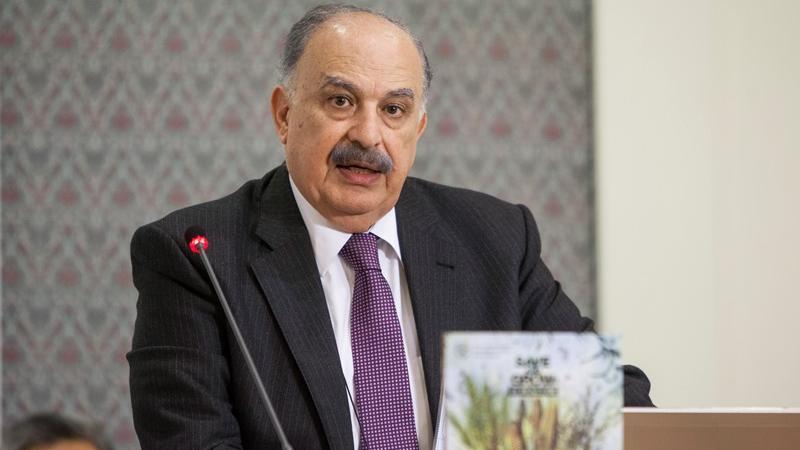‘Save and Grow’ model for achieving Sustainable Development Goals

On 18 January 2016, the United Nation’s Food and Agriculture Organization (FAO) released a book, ‘Save and Grow in Practice: maize, rice, wheat. A guide to sustainable cereal production,’ which advocates for a sustainable, ecosystem approach to cereal production. A roundtable discussion with high-level specialists in cereal production and ecosystem-based agriculture included Dr. Clayton Campanhola, FAO Strategic Programme Leader (Sustainable Agriculture), Dr. Mahmoud Solh, ICARDA’s Director General, Dr. Martin Kropff, Director-General, CIMMYT, Dr. Achim Dobermann, Director, Rothamsted Research, and Dr. Timothy Reeves, Chair, Agriculture Forum, Australian Academy of Technological Sciences and Engineering. The roundtable discussion was introduced by Dr. Helena Semedo, FAO Deputy Director General, Natural Resources, and moderated by FAO’s Dr. Ren Wang, Assistant Director-General, Agriculture Department.
Dr. Solh elaborated on his contribution to the book on ‘Enhancing Food Security and Improving Livelihoods in Dry Areas’. The discussion explored the challenges facing humanity and the role of ‘Save and Grow’ model of agriculture in achieving the United Nations’ Sustainable Development Goals.
This practical guide to sustainable cereals production reviews progress in the adoption of ‘Save and Grow’ practices by smallholder farmers in the developing world. It presents examples of ‘Save and Grow’ farming systems that are producing more grain per hectare and generating significant social, economic and environmental benefits. It shows how ‘Save and Grow’ practices restore production in wheat-growing regions of India and Kazakhstan, where Green Revolution technologies have faltered, and raised the productivity of low-input maize systems practiced by farmers in Central America and East Africa.
‘Save and Grow’ has proven itself in farmers’ fields. The challenge now is to upscale the approach in national programs.
